Part 1 of the series can be found HERE, part 2 HERE and part 3 HERE.
“It all began 18th May. I was alerted by incessant calls of a male Common Tailorbird (Orthotomus sutorius). Calls were heard coming from a side bush along an established opened trail, surrounded by isolated, small plantation holdings of mixed palms and fruit orchards.
“A moving flash of blue and white fluttered off ground, near entrance to a sub-trail. It caught my attention and in time to see another bird nearby. I knew immediately… I had caught up with my heart throb, my feathered friends- Blue-winged Pittas (Pitta moluccensis) in their favourite playground of damp, ground- foliage litters.
“I showed up prepared next morning with camouflaged curtain and found suitable spot to sit and awaited their arrival.
“From the dimmed interior of under canopy, mixed forest growth, the birds appeared A fallen, rotted log near entrance to sub-trail appeared to be their favourite spot to forage, preen, socialise and to rendezvous.
“I was about 5 metres from the log. Had great views, in this small window of opportunity; to observe Hercules and Medusa- pair of breeding Blue-winged Pittas (Pitta moluccensis) lived their breeding moments.
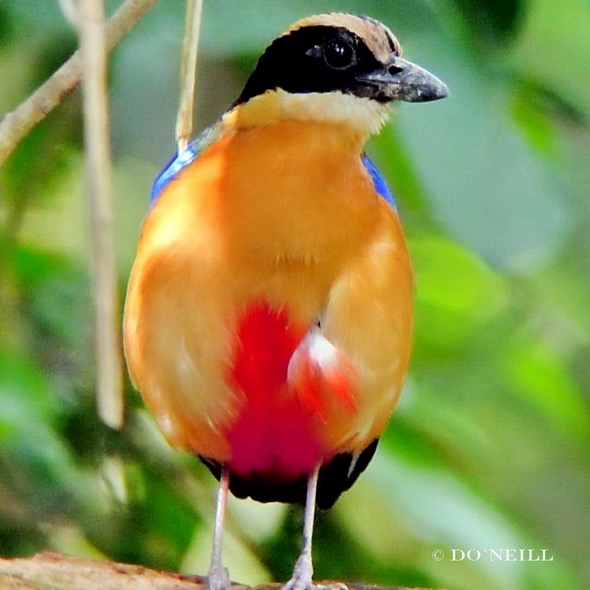
“Here is male bird – Hercules (above).
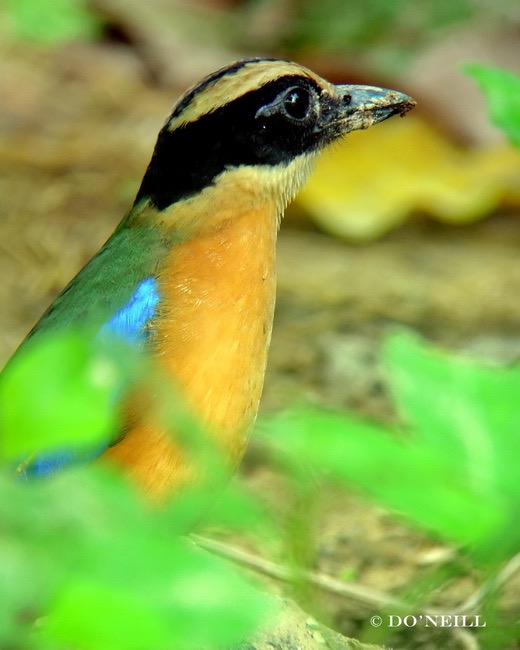
“Here is female bird – Medusa (above).
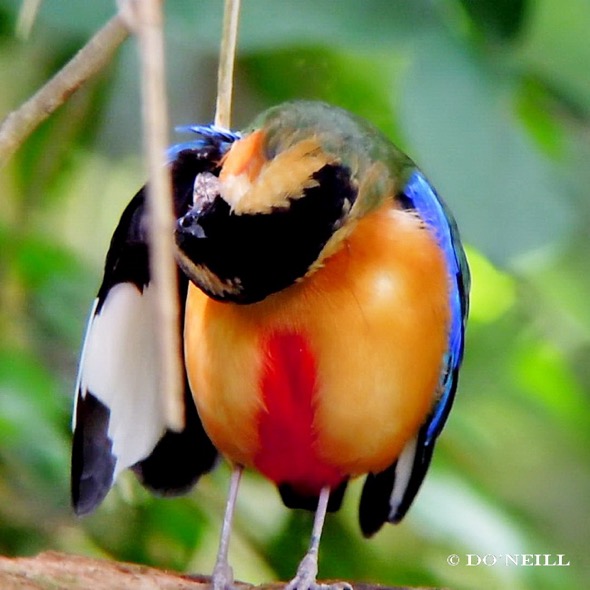
“An ongoing meticulous process of preening carried out by Hercules. Here are some extracted images from videography (above, below).
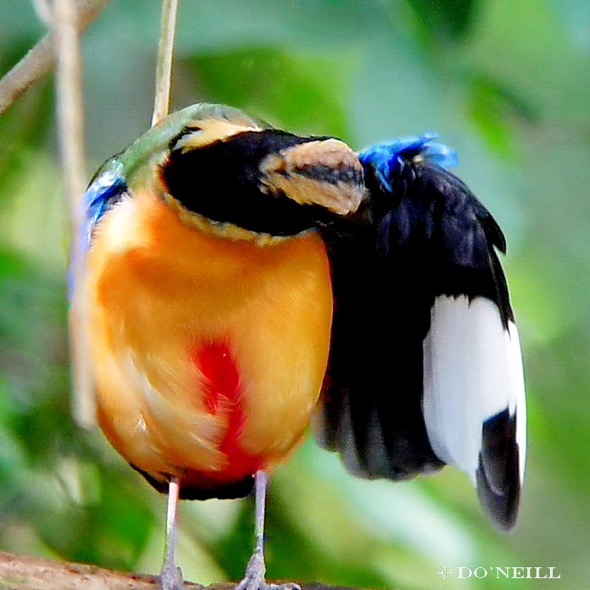
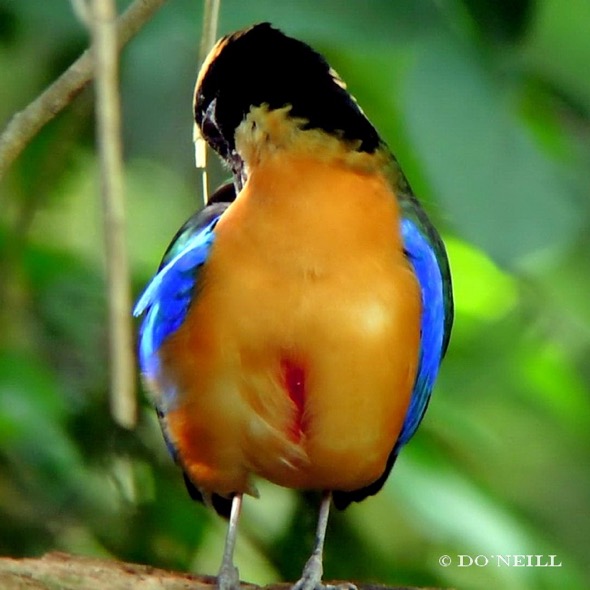
“In addition to attending both wings and rear, down feathers of vermillion red over belly were individually nibbled at, straightened and cleaned out. It was also observed lower half of red down featherings to be all pure white (below).
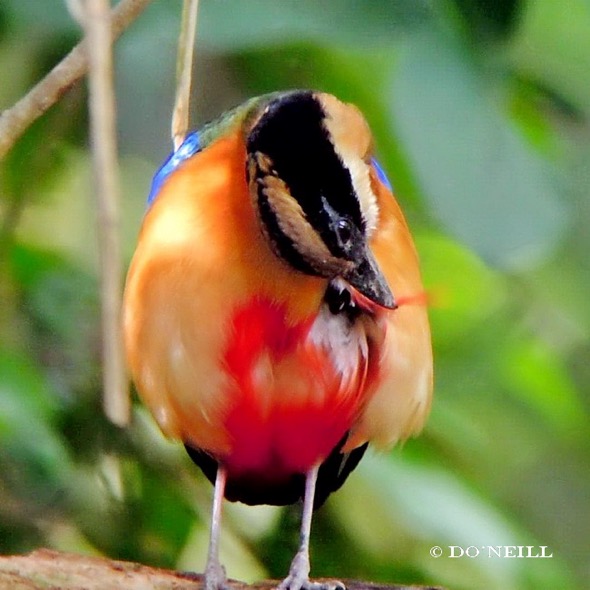
“Plate below shows a no nonsense, serious and intuitive female staring into direction of my Digiscope.

“Medusa had been busy ground digging that morning – 19th May and carried soiled featherings on her chest and belly. The evidence suggested initiation of nest building had begun (below).

“I had only one sighting of breeding bird with nesting material. That too came on 19 May.
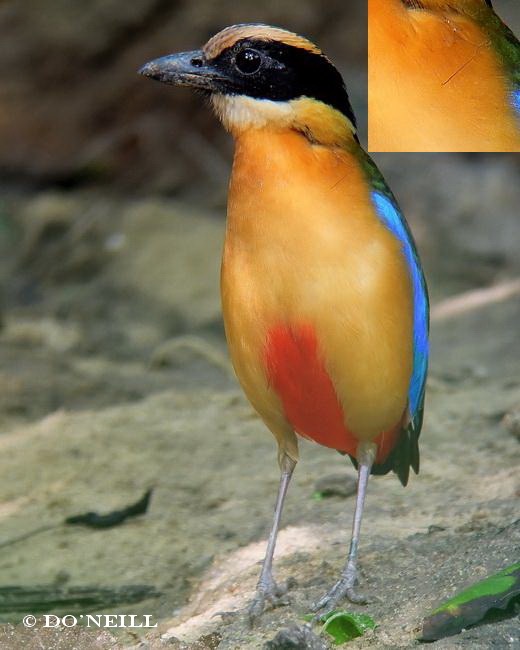
“There was also evidence Hercules shared in nest building duties. Remnant nesting material on his feathering left shoulder as picked up in photography shown here (above).
“My past observation of nesting Blue-winged Pitta pair had it that while both partners gathered nesting materials, female took lead role in ground foundation and nest construction. Macho male supervised and entered nesting domain for periodic inspections and security duties.
“Recalling this account, it would seem correct, male partners are more particular with preening and plumage maintenance. It is also less likely to see belly of male birds heavily soiled like their female partners- elaborating somewhat like a miner emerging from a coal mine… all soot up.
“My observations in their breeding habitat included foraging vermin by flicking over leaf litters, patrolling rubbish dumps, damp grounds and side trails and prospecting nesting materials nearby river streamed, bamboo grove areas.
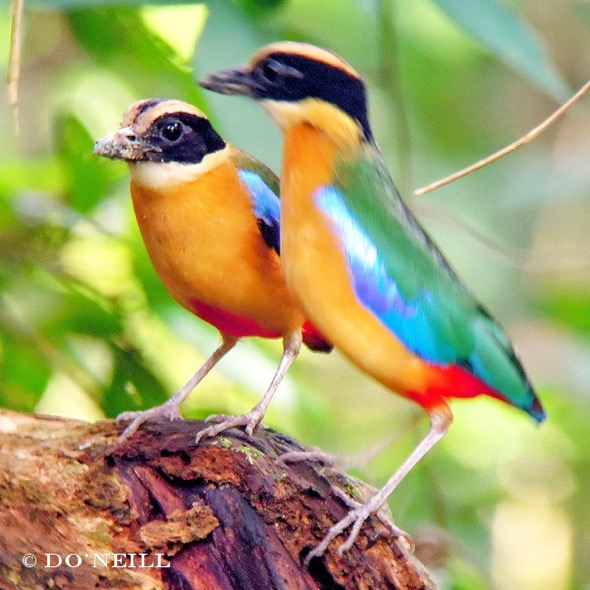
“Their favourite perch was at highest point of fallen log. I soon learnt and anticipated their movements and kept DGscope- my 3rd eye fixed on that point, sipped morning coffee and watched bird image appeared on camera. “Sometimes, luck struck big and partner showed upfront like this blurry image (above).
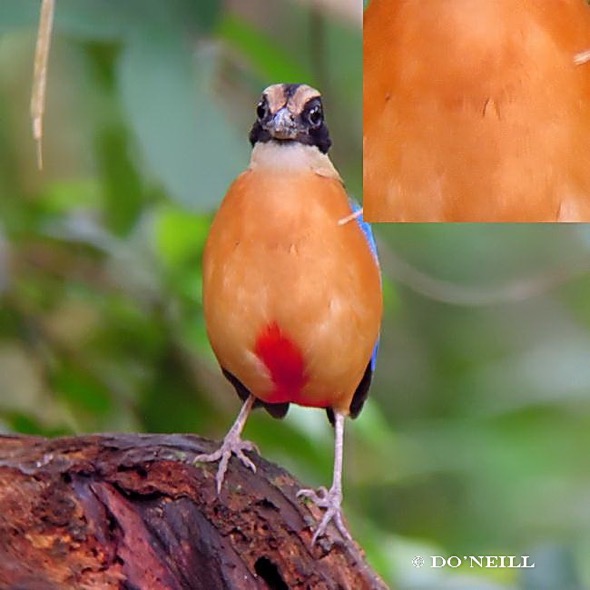
“Pitta pair remained in same foraging area for several days.
“On 23 May morning, Hercules emerged with slight soil staining on chest feathering. There was no rain overnight (above). |
“Hercules’ presence alone suggested Medusa had begun incubating duties and playing dominant role doing just that. Chest stains on Hercules implied he probably sat in for overnight shift, or entered nest perhaps for inspection and/or relief duties apart from his primary perched role as security guard.
“My presence was eventually picked up by Hercules. We exchanged stare as in Plate 11. He flew onto a tree canopy branch to ‘Checkmate’ me.
“Well…. it was time to move on for all parties concerned. It was futile to go looking for BW Pitta nesting pair as they had gone totally silent. The nomadic pair was nowhere to be seen since that morning of 23 May.
“It is also a bad idea to go looking for their nest. The bad news is- having found an active nest only makes it easier for predators to follow trail and scent I may leave behind.
“This is serious. Should nesting fail, I would be contributing to and be held accountable for lacking in consideration to take conservative measures in protecting life. My actions also be deemed irresponsible should eggs/hatchings be predated especially by feral felines and canines, monitor lizards, primates and other observant forest dwelling mammals with acute sense of smell that followed my trail and body scent.
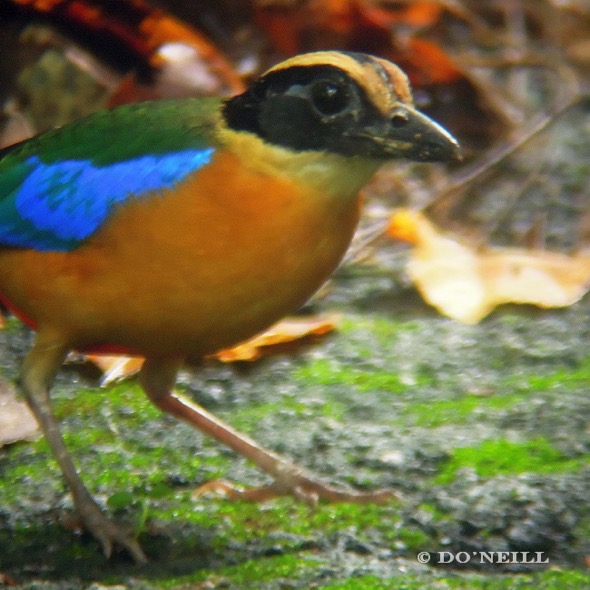
“It was only four days later and again on 7 June that I spotted a female bird approaching from a distance. She was Medusa and foraging alone in a different site, about 100metres away from favourite spot (above).
“I eventually lost tract of breeding pair as there was no further sight of them or had any chicks to show by date. It would be another month on 7 July that I intuitively decided to make a revisit that I spotted a BW Pitta flew to a perch with vermin and then flew away.
“I recognised bird to be Medusa. By my calculation, feeds were for a second brood. The first batch had failed.
“Readers who had been following my monitoring series of parenting Blue-wing Pitta (Pitta moluccensis)- Hercules and Medusa, do join me to fast forward, pussy foot to a fact finding mission of the mystery nest where juvenile birds- Doe, Ray and Me successfully emerged from.
“Be surprised!”
Avian Writer Daisy O’Neill
Penang, Malaysia
23rd September 2016
Copyright article and all image copies – Courtesy of Daisy O’Neill Bird Conservation Fund








